
Blog-Layout
Astrology - the planets
Aug 19, 2020
THE PLANETS
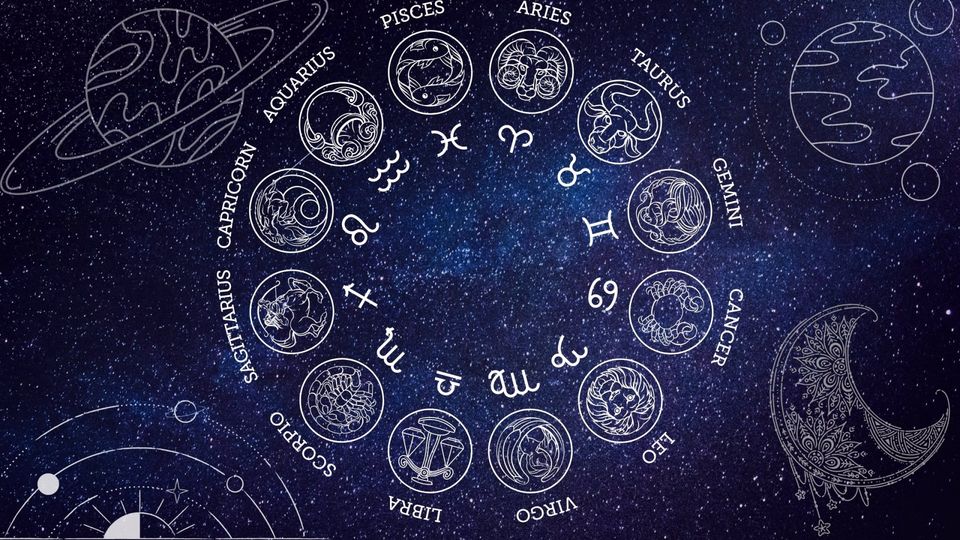
Sun ( Descendant):
determines your general role in life. It's your ego, your identity and the core of who you are.
Moon:
likely the sign you refer to yourself most to. It rules moods, feelings, emotions and reflects your personality when you're alone or deeply comfortable
Ascendant:
determines the self you present to people. It's the way people perceive you first meet and it can also be seen in your Personal style. The ascendant changes every two hours.
Mercury:
determines communication - it's the planet of the mind. In other words, how you communicate, think, talk and process information. Furthermore, it defines the way you learn.
Venus:
determines love - how and what you love and also how you express your affection towards others, as well as the qualities you're attracted to.
Mars:
rules how you assert yourself, take action, and the energy that surrounds you. Mars is also known as the planet of aggression and defines how the energies in your sex life, your ambitiousness and your anger.
Jupiter:
is a social planet - meaning it stands for and rules idealism, optimism and expansion. Jupiter is a very philosophical planet.
Saturn: is also a social planet - meaning it stands for and rules responsibility, restrictions, limits, boundaries fear and self-discipline.
Uranus:
stays in each sign for 7 years. Consequently, it defines a generation more than a person. The planet Uranus defines and stands for innovation, rebellion and progress.
Neptune:
stays in each sign for around 14 years. Consequently, it defines a generation more than a person. The planet Neptune defines and stands for dreams, imagination and the unconscious.
Pluto:
stays in each sign for up to 30 years. Consequently, it defines a generation more than you as personally. The planet Pluto defines and stands for power, intensity, obsession and control.
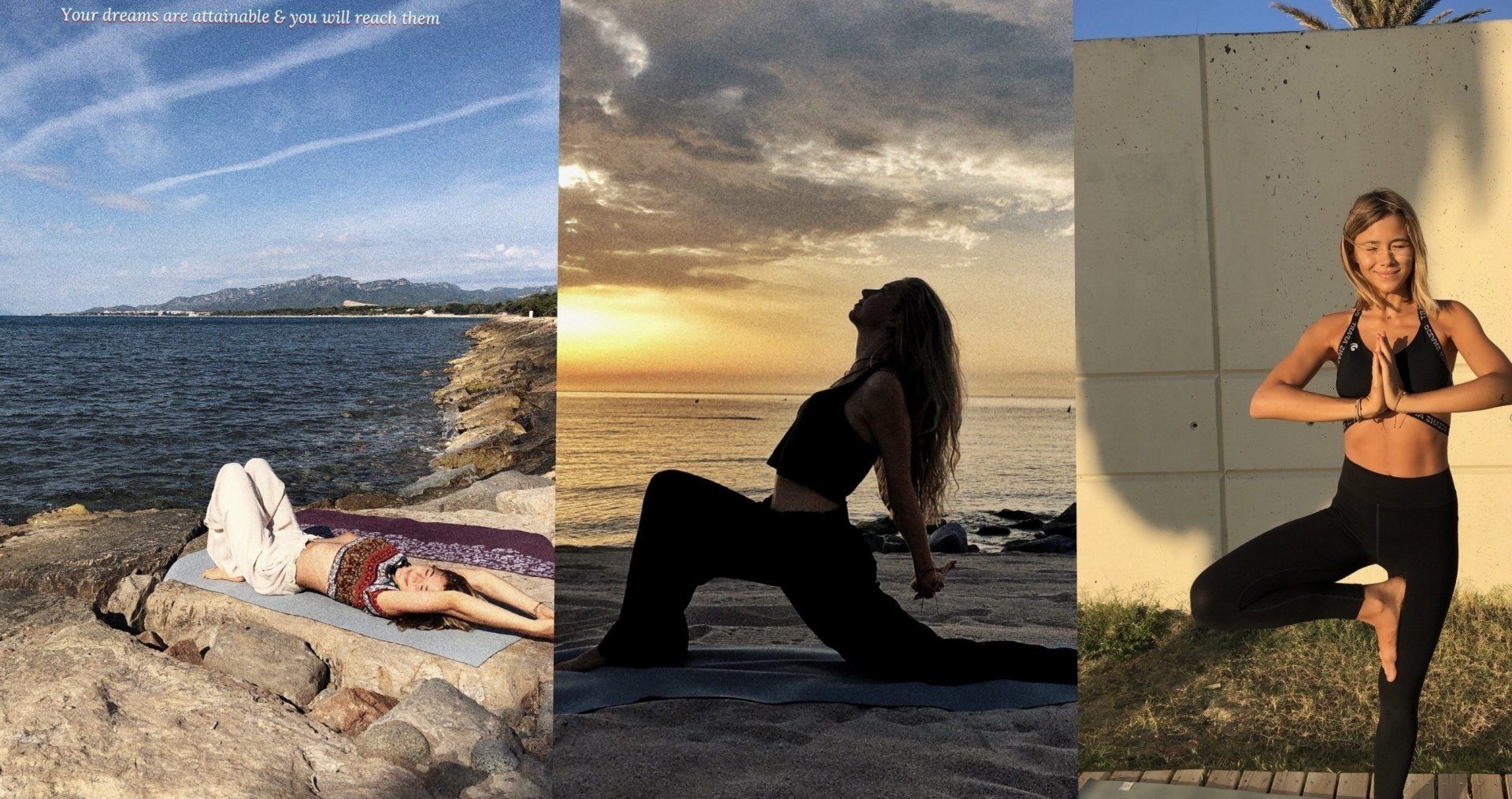
By Carolin Schröder
•
07 Oct, 2020
NAMASTE YOGIS & YOGINIS Let's start at the beginning: we actually wanted to go to India to do a traditional yoga teacher training (YTT) to become certified yoga teachers during our semester break from university. However, the ongoing virus made this plan impossible. We then decided to still do the YTT according to plan B, which would mean that we would go to Barcelona, Spain instead. But, a couple of days before our flight to Spain, this YTT also got cancelled. We did not let ourselves get discouraged by that and still got on the plane to Barcelona. Like they say, third time's a charm. At the beginning of September we started an online YTT with a yoga school that is based in India with amazing teachers and gurus. Because of these very unique times and this new form of teaching we wanted to share our experiences with you. About one month ago Caro and I started our online self-paced online Yoga Teacher training in Barcelona. A lot changed since then - today, one month later, Caro is already back in Germany and in between in the Netherlands for one month and I’m going back to Barcelona after 10 days at home with my family. Barcelona became my new home in the past two months and I’m certain about my decision to stay there as long as possible. It feels just logic and right to go with the flow and to follow my dharma. I let go of what is no longer serving me and take care to follow my intuition. However, in this blog post I want to tell you a little more about our online Yoga Teacher Training. The focus is on Hatha, Kundalini and Ashtanga Yoga. Additionally, we have classes about Pranayama, Yoga Therapy and Anatomy, Yoga Philosophy, Meditation, Kundalini Theory and Alignment classes with 10-20 videos per topic. Those videos are pre-recorded and we can watch them anywhere and anytime. For those who are more flexible with time, it was also possible to do the classes live. I can’t give you a review here, as I did everything by myself with the pre-recored videos. :) It’s a beautiful experience and I only can recommend it to everyone who has doubts if an online Yoga teacher training is legit. For sure, it is nothing compared to a 3 week intense Yoga Teacher Training in an Indian Ashram but it’s a great start to deepen your knowledge, to become a certified teacher, to lear more about yourself , to align with your values and goals as well as finding out if being a Yoga Teacher could be something you would consider doing. I’m certain that next year I’ll do another Yoga Teacher Training as I want to get more into Iyengar Yoga and also be certified to practice with children. I'll start giving my first lessons to a group of 8 people in December - so excited. Important to know for you is, that you really need time ! The Online Yoga Teacher Training is still a lot of work and it takes many hours to finish. The theory is a lot but also the practical lessons, where you do Yoga and at the same time learn what to be aware of as a teacher are time wise intense. Especially, to not stress about and and to be in the flow state I highly recommend you to only do it if you work half days, study or have some time off to focus on your Yoga journey ! :) We booked our Teacher training with Samadhi Yoga Ashram. The Online Training is a great way to still be able to continue with the yoga training from the comfort of your home. You’ll be a “Yoga Alliance” certified Yoga Teacher by the end of your training. Follow the link for more information: https://samadhiyogaashram.com “Here you will not only learn yoga postures but our experienced teachers will introduce you to all sister sciences. After the course you will feel very knowledgeable, active, balanced and confident to practice and teach yoga well” Much Love & Namaste Lotte xx
By Carolin Schröder
•
07 Sep, 2020
Yoga is often only viewed as a physical practice, a form of movement for which you have to be super flexible to bend your body in some insta-worthy poses. However, yoga is so much more than reaching your head with your feet or doing handstands. In fact, it is a wholesome practice that helps you connect your body, mind, and spirit. In this quick overview you will learn what yoga means and how it can affect your overall well-being and daily interactions. Yoga is derived from the Sanskrit word yuj , which means "to unite" . It is aimed at unifying the physical and spiritual parts of oneself through movement, breathing methods, and meditation. There are many different styles of yoga, but they all have one thing in common: they connect you to the present moment and help you become more aware of your thoughts, emotions, and behaviors. According to Patanjali’s Yoga Sutras there are "Eight Limbs of Yoga" , which offer practices to create a more wholesome and spiritual approach to life. Yamas - Five universal, ethical & moral standards to live by: nonviolence, truthfulness, not stealing, continence & non-covetousness Niyamas - Five spiritual, self-discipline observances: cleanliness, contentment, spiritual austerities, study of scriptures & surrender to the higher power Asana - Physical postures/poses, initially intended only for seated meditation, but now includes all physical yoga practices Pranayama - Breathing exercises to control the flow of prana (life energy) Pratyahara - Disconnecting from the senses Dharana - Single pointed concentration Dhyana - Meditation Samadhi - Liberation and union with the Divine With these basics you can transform your yoga practice and bring more awareness to your mat. Learning more about the deeper meaning of yoga will add more layers to your yoga routine and thus intensify your experience with your physical and spiritual sides. Let us know about yoga facts that you found interesting or surprising! Namaste yogis and yoginis :)
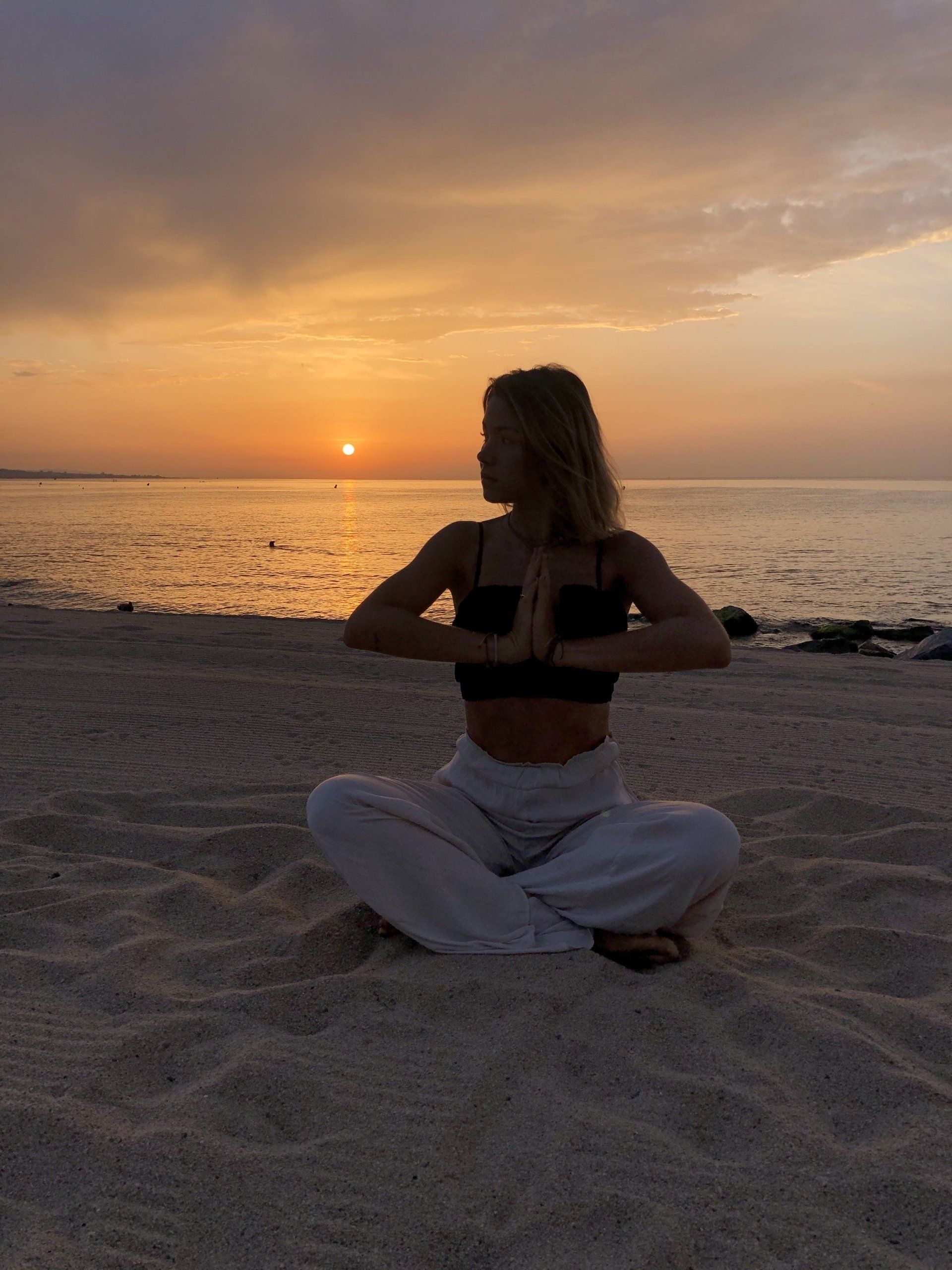
By Carolin Schröder
•
23 Aug, 2020
Do you want to try meditating for the first time or do you just want a quick meditation practice to integrate in your busy day? Then this 5-minute meditation is perfect for you! Also, we are going to give you some practical tips on how to create a peaceful outer and inner environment for a powerful practice, and provide you with some insights to this ancient tradition. However, this should only be seen as an inspiration to create a meditation practice, as a starting point to develop your unique moment of inner silence, because in the end, everyone is different and you should always listen to your body’s inner wisdom to do what feels best to you. Of course, this can also change depending on the day or your mood in that specific moment. This connection to your intuition will often come with time. As you learn to become still and observe your body and mind, you will learn to recognize the inner voice that is guiding you. You will learn to trust this voice, which can also be helpful in finding your ideal meditative state any time you want to immerse your mind in stillness. Now, let’s get started. First, find a quiet place, where you do not get disturbed for the next 5 to 10 minutes. This could be your bedroom, your own office, or outside in nature. Find a comfortable seat in a cross-legged position, or choose to lay down on your back. Maybe shift a bit back and forth to make yourself comfortable. Then arrive in stillness, and when you are ready, close your eyes. A great way to become more present in the moment is to focus on your breath. Take a deep inhale: fill your lungs with air and become aware of this gift to be here in this moment doing something good for your body, mind, and spirit. Then, exhale all the way. Repeat this deep breath for at least 5 times. Now, let go and let your breath return to your natural rhythm. Don’t worry if there are thoughts popping up again in your mind - this is completely normal! Just try to become aware of them, but do not let them pull you down a rapid stream of even more thoughts. Instead observe these thoughts, recognize their existence and let them go. Do not become attached to them - they are just a product of your thinking mind. Become aware that you are the consciousness that is observing these thoughts, but you are not your thoughts. Inhale. Exhale. Return to the deep breathing pattern whenever you feel overwhelmed by what is going on in your mind. Especially, when you have a lot of things going on in your life right now, it can be hard to arrive in complete stillness and let go of the past and any possible future events. It does get easier with more practice. Become aware of how your body feels. Is there any tension? Breathe in to the tension and relax. Turn your attention to your feet. Notice where they touch the ground beneath you, and fully relax them. Move your focus further up to your ankles, to your calves. Let go of any tension you hold here and continue to move your attention to your knees, to your thighs, up to your hips. Become aware of your abdominal and you lower and upper back. Take a deep breath and let go of the tension you hold here because of a stressful situation or just from sleeping in an uncomfortable position. Now relax your shoulders and your neck and all the tiny muscles in your face. Relax your jaw, your tongue, the space between the eyebrows and your forehead. Your body is now completely relaxed. Take a few deep breaths in and out and enjoy this moment of just being comfortable and fully present. Inhale. Exhale. Notice the sounds around you. Maybe you hear an A/C in your room, or a person in the room next to you moving around. Or you hear vehicles passing by, maybe the sound of birds, the rustling of the wind in the trees, or even the sound of the waves of the ocean. Whatever you hear: notice it, become aware of this moment. Do not get attached to the sounds - just observe them. This can achor you to the current point in time. Because the past or the future does not really exist. All there is is this present moment; the moment you are alive, breathing in fresh air that energizes your body and allows you to have this experience. Slowly deepen your breath again, letting go of observing the sounds around you and focusing again on your own body. Deeply inhale. Feel how your belly expands and fill your lungs all the way. Then slowly exhale. Notice how your body feels. Do you feel different to when you started this meditation? Just notice what changed without judging it. Slowly start moving your fingers again, and your toes. Take one more deep breath in, take your hand together in front of your heart. Exhale slowly. Thank yourself for taking this time today to become more present and let go of any stress you might have experienced. And when you are ready, blink your eyes open and enjoy the rest of your day! Try it out for a week and let us know whether you have noticed any changes in your mind or body. It can also just mean for you that you are becoming more aware of the little things in your daily routine that you haven't noticed before. But do not judge the change, anything is okay! Just observe and become more concious of it; and - most importantly - enjoy the process! :) xx
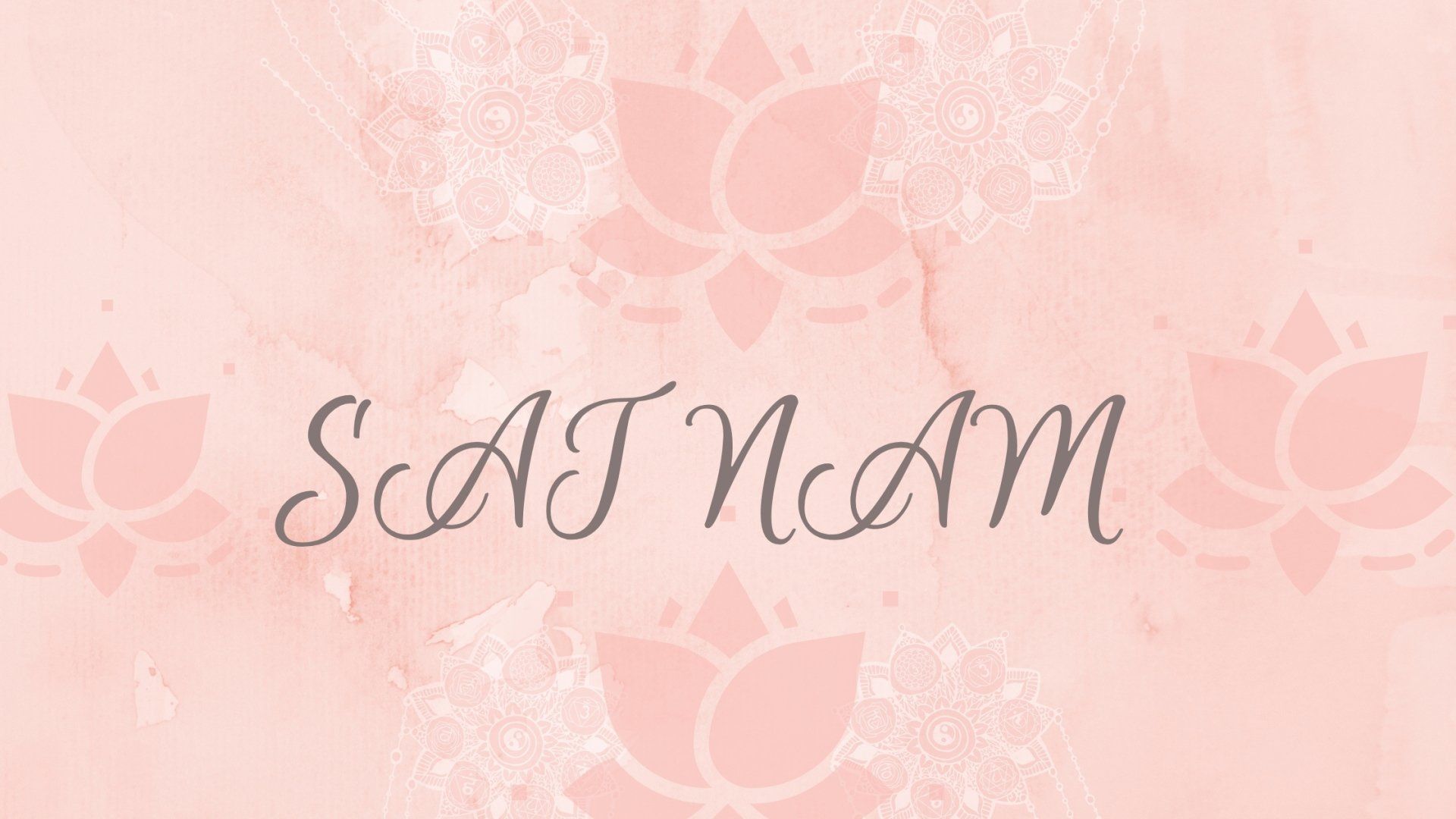
By Carolin Schröder
•
21 Aug, 2020
If you have ever practiced Kundalini Yoga it is highly likely that you have heard the mantra SAT NAM. It is used during the Pranayama (breathing) practices to focus on your breath and therefore become more present in the moment. It is also often used as a closing mantra of the yoga practice. But what do these two syllables actually mean and do they play such a central role in Kundalini Yoga? SAT NAM is sanskrit for: SAT = truth, honesty NAM = identity, name SAT NAM therefore represents your true identity, your higher self. It can also be used to express “I see your true nature.” or “I recognize the divinity within you.” SAT is the higher consciousness, connected to the energies of your crown chakra, while NAM connects you to the grounding material energies of the root chakra (find out more about your seven chakras here). When chanting SAT NAM you connect the higher vibrations to the physical world, which allows you to manifest your goals and dreams. This mantra helps you connect to your subconscious mind, your intuition, and to the feeling of oneness with everything and everyone around you. It is a very simple yet complex mantra, a so-called seed (Bij) mantra. The vibration you are creating when chanting this mantra alters your natural frequency, which will change to match this new vibrational energy; a seed is planted that will transform how you feel on the inside, and eventually also reflects this new energy to the outside. Two methods to integrate SAT NAM in your daily life: 1. Seated meditation Sit down in a comfortable seat, either on a chair or on the ground with your legs crossed. Bring your hands together in front of the heart in prayer pose. Breath in - SAT Breath out - NAM 2. Walking meditation Go outside and take a walk; preferably in nature or somewhere without many distractions. Focus on your breath and the movements of your body. Right foot forward - SAT Left foot forward - SAM Let us know what changes in your mood and energy you notice when integrating this mantra in your yoga and meditaion routine :) Sending you love and positivity, xx
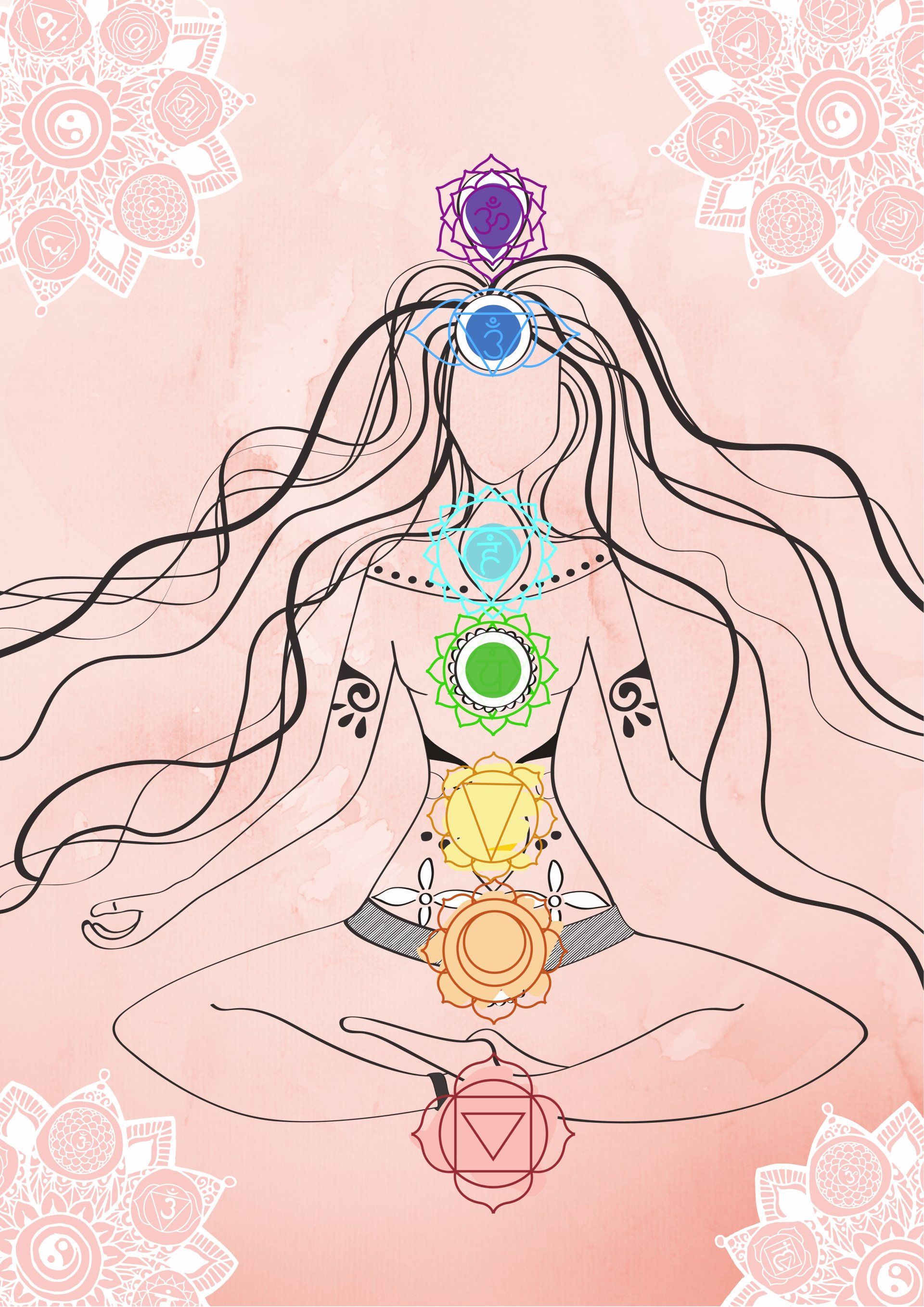
By Carolin Schröder
•
18 Aug, 2020
Chakra is the Sanskrit word for “wheel”, symbolizing a swirling disk of energy, connecting the physiological as well as neurological structures of the body. In the practices of yoga and ayurveda, the chakras are the seven energy centers within the body. They are spread around throughout your body, from the base of the spine all the way to the crown of the head. Each of them is associated with different functions and emotions, and therefore has its own energy frequency, which is expressed by seven different colors. You might have noticed: we talk a lot about opening up your chakras. This essentially means that you remove any blockages you have in your energy centers so that the Prana (life energy) can move freely through the various energy centers and throughout your whole body. Only when your chakras are well aligned the energy can move through them with a high intensity. But what actually are the seven chakras and how do you open them up? The first step in opening up your energy centers is becoming aware of them. So, let me explain the seven chakras and their roles for your body, mind, and spirit.

18 Aug, 2020
Sahasrara (Crown Chakra) moldavite, citrine, quartz, red serpentine, purple jasper, tourmaline, white, gold beryl, lepidolite, purple sapphire Ajna (Third Eye Chakra) Apophyllite, sodalite, moldavite, azurite, lapis lazuli, garnet, purple fluorite, kunzite, lepidolite, malachite with azurite, royal sapphire, electricblue obsidian, azeztulite, atacamite, Herkimerdiamond Visuddha (Throat Chakra) azurite, turquoise, amethyst, aquamarine, blue topaz, blue tourmaline, amber, kunzite, amethyst, lepidolite, blue obsidian, petalite Anahata (Heart Chakra) rose quartz, green quartz, aventurine, kunzite, variscite, red calcite,muscovite, rondonite, fucsia /pink/ green tourmaline, peridot, apophyllite, lepidolite, morganite, pink danburite, ruby, chrysocolla, greensapphire Manipura (Navel or Solar Plexus Chakra) mal achite, jasper, tiger eye, citrine, yellow tourmaline, golden beryl, rhodochrosite, smithsonite Svadisthana (Spleen or Sacral Chakra) blue / r ed jasper, orange cornelian, topaz, orange calcite, citrine Muladhara (Root Chakra) azurite, heliotrope, chrysocolla, obsidian, golden yellowtopaz, black tourmaline, cornelian, citrine, red jasper, smoky quartz

By Carolin Schröder
•
17 Aug, 2020
Zodiac Signs Overview Aquarius: January 20 - February 19 Pisces: February 20 - March 20 Aries: March 21 - April 20 Taurus: April 21 - May 20 Gemini: May 21 - June 20 Cancer: June 21 - July 22 Leo: July 23 - August 22 Virgo: August 23 - September 22 Libra: September 23 - October 22 Scorpio: October 23 - November 22 Sagittarius: November 23 - December 21 Capricorn: December 21 - January 19 Check out the Zodiac Sign Collections in our online store
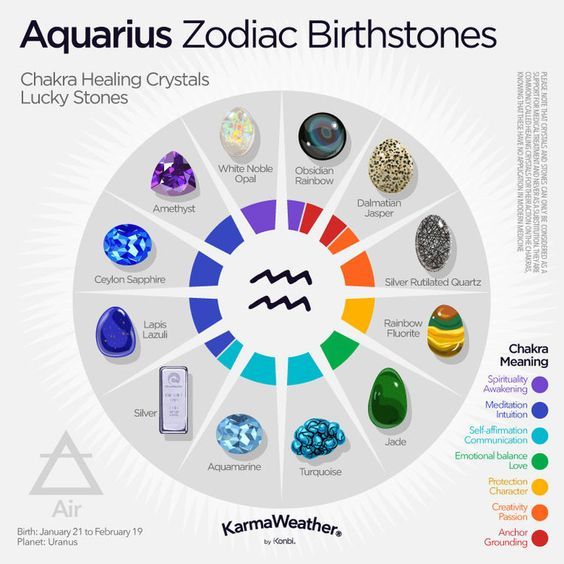
By Carolin Schröder
•
17 Aug, 2020
For thousands of years, people have been fascinated by gemstones. Ancient Egyptians already knew how to use these special stones for promoting health and longevity. Myths and stories have been created around them, but it is no secret that the chemical structure of each mineral causes different frequencies and thus creates unique energies. We all feel drawn to gemstones in different intensities. Have you ever wondered why it is that in the presence of some stones you feel super energized and creative while others make you feel more calm and relaxed? The answer to this could be connected to your star sign. Especially Asian traditions, like in Chinese medicine or in the Buddhist approach to the chakras, suggest that certain gemstones are connected to one of the twelve zodiac signs. There is one specific birthstone for the star sign you were born in as well as several additional healing stones that provide the most powerful healing properties for you. Below you can find overviews of the zodiac sign with several stones and their functions Click here to find out more about the zodiac signs, dive deep into the constellations of the planets and stars in the exact minute you were born, and their implications for you.
